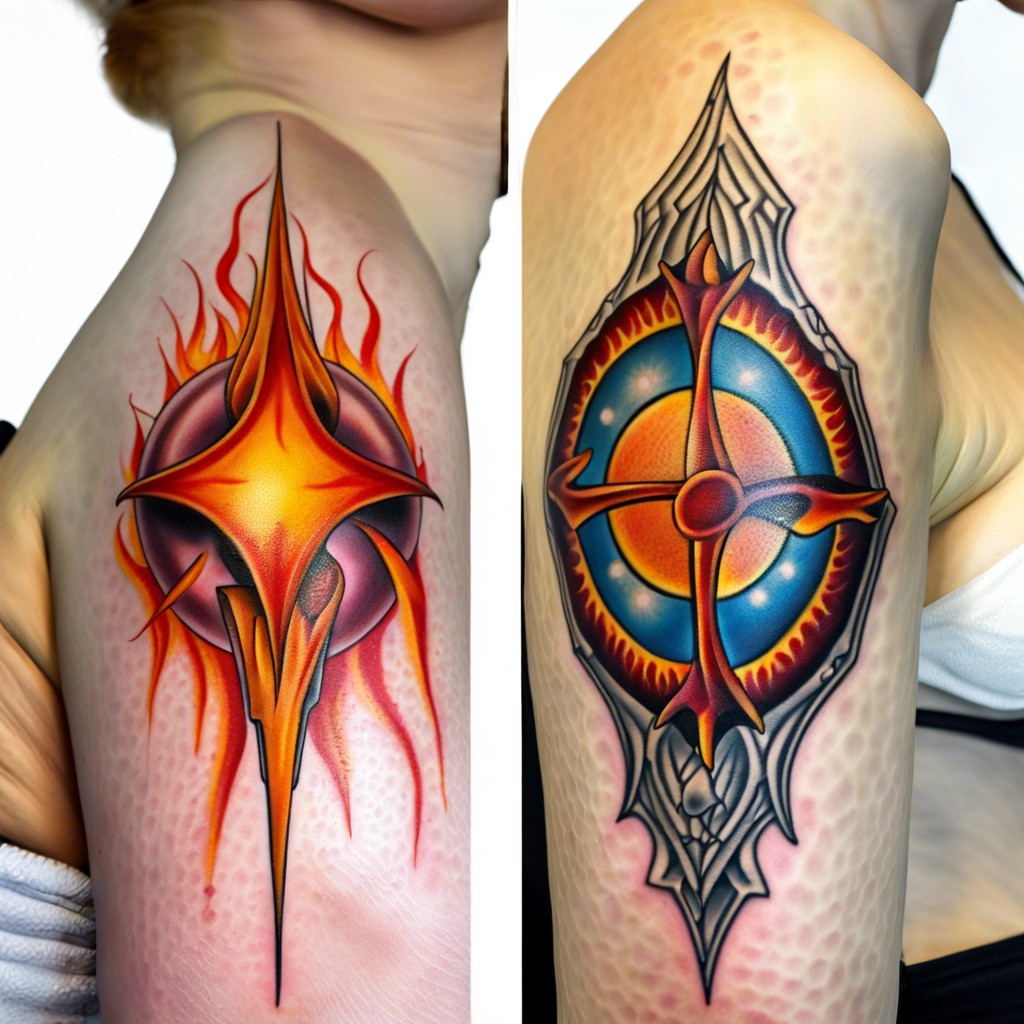Understand the signs of an infected tattoo and the vital steps to treat it to ensure your skin art heals properly and remains vibrant.
Recognizing Signs of an Infected Tattoo

Look for redness, swelling, and warmth around the tattoo area, beyond typical healing reactions.
Unusual discharge, like pus, and a foul odor are clear indicators of infection.
Persistent pain, fever, and chills suggest that the body is fighting an infection and may require medical attention.
Steps to Treat an Infected Tattoo At Home

Begin by gently cleaning the area with mild soap and warm water, then pat dry with a clean towel.
Apply an over-the-counter antibiotic ointment to reduce the risk of further bacterial growth.
Cover the tattoo with a sterile, nonstick bandage, changing it daily and after each cleaning.
When to See a Doctor for an Infected Tattoo

Seek medical attention if the tattoo area displays severe redness, swelling, or pus-filled blisters, suggesting a serious infection. If experiencing fever or chills, it’s critical to consult a doctor as these symptoms can indicate a spreading infection. Persistent symptoms that do not improve with basic home care warrant a professional evaluation to avoid further complications.
Antibiotics for Tattoo Infections

Antibiotics are critical for addressing bacterial infections in tattoos, often prescribed as topical creams or oral medications.
Adherence to the prescribed antibiotic course is essential to effectively eradicate the infection and prevent further complications.
Consultation with a healthcare provider is crucial to determine the appropriate type and dosage of antibiotics for your specific case.
Prevention Tips for Tattoo Infections

Maintaining strict hygiene, such as washing hands before touching the area and using antimicrobial soap on the tattoo, is crucial.
Always follow the aftercare regimen provided by your tattoo artist, including keeping the tattoo covered as advised.
Avoid risky environments like swimming pools or hot tubs and ensure clothing over the tattoo is clean and soft to minimize infection risk.
Common Bacteria Involved in Tattoo Infections

Staphylococcus aureus is a frequent perpetrator in tattoo infections, often contracted from non-sterile equipment.
Pseudomonas aeruginosa can cause greenish pus and is typically associated with contaminated water exposure.
Streptococcus pyogenes, though less common, can lead to severe complications if not treated promptly.
Risks of Ignoring an Infected Tattoo

Neglecting an infection can lead to the spread of bacteria, potentially resulting in sepsis, a life-threatening response to infection that can cause organ failure.
Persistent infection without proper treatment can cause permanent damage to the tattoo, distorting the artwork and leading to extensive scarring.
Ignoring the signs of infection also heightens the risk of developing allergic reactions or chronic dermatological conditions.
Cleaning an Infected Tattoo

Properly wash your hands before touching the area to prevent further contamination.
Gently cleanse the tattoo with antimicrobial soap and lukewarm water, dabbing rather than scrubbing.
After cleaning, pat the area dry with a clean paper towel and apply a thin layer of prescribed ointment.
Tattoo Aftercare to Prevent Infection

Effective aftercare is paramount; keeping your tattoo clean and moisturized with appropriate products can ward off harmful bacteria.
Covering the new ink with a breathable bandage for the first few hours guards against outside contaminants.
Following a balanced diet and staying hydrated aid in your body’s natural healing process, promoting a healthy recovery of your tattooed skin.
The Role of Tattoo Artists in Preventing Infections

Tattoo artists play a critical role in infection prevention by maintaining rigorous hygiene standards, such as sterilizing equipment and using fresh gloves for each client. They are responsible for educating clients on proper aftercare to ensure optimal healing and minimize the risk of infection.
In addition to their technical skill, a reputable artist will ensure that their workspace meets industry-sanctioned cleanliness protocols to safeguard both artist and client health.
Healing Time for an Infected Tattoo

Healing times can vary, with minor infections resolving in a few days to a week, while more severe cases may take longer.
Following proper aftercare and treatment prescribed by a healthcare professional is crucial to expedite recovery.
Persistent symptoms beyond two weeks may indicate a need for medical intervention.
Complications From Tattoo Infections

Untreated tattoo infections can lead to serious complications such as sepsis, which is a life-threatening response to infection.
Scarring and permanent damage to the tattoo design can result, affecting both aesthetics and skin integrity.
Additionally, a chronic infection can lead to the spread of bacteria to other parts of the body, necessitating more extensive medical intervention.
Natural Remedies for Tattoo Infections

Tea tree oil, known for its antimicrobial properties, can be applied to help reduce infection risks.
A warm saline solution soak can aid in soothing the area and drawing out bacteria.
Aloe vera is gentle, acts as an anti-inflammatory, and can assist in the healing of mild irritation.
The Difference Between Tattoo Infection and Normal Healing

A normal healing tattoo may exhibit redness and swelling, while an infection often presents with increasing pain, spreading redness, and sometimes pus discharge.
It’s common for a healing tattoo to feel itchy, but an unusual level of discomfort or warmth could indicate infection.
Knowing your body’s typical healing process can help distinguish normal signs from those warranting a closer look for potential infection.
Educational Resources On Tattoo Infections

Leveraging educational resources equips individuals with knowledge on identifying, preventing, and addressing tattoo infections. Health organizations and tattoo industry leaders provide pamphlets, websites, and videos detailing best practices and aftercare. Accessing these materials helps tattoo enthusiasts make informed decisions about their skin art, reducing the risks of complications.
Get inspired by more ideas:





